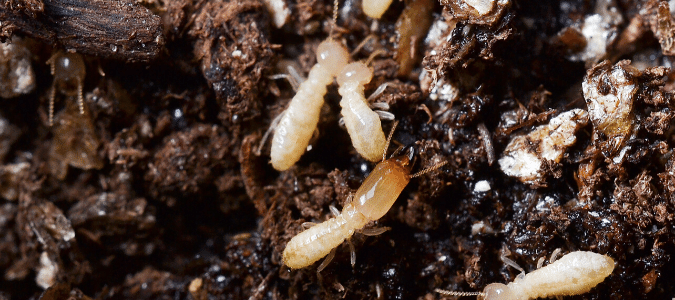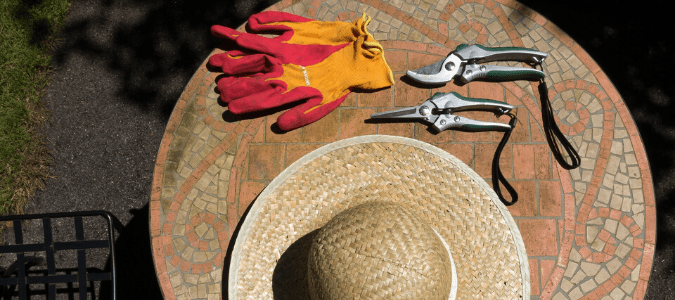Finding what seems to be termites in your carpet is a worrying experience for any homeowner, as termites can cause a lot of damage. Most people would expect to find these pests someplace where there’s wood, but termites in carpet? Though that’s not where most people might expect to see them, this is entirely possible.
If you find termites in your carpet, the first thing to do is to determine whether they actually are termites or if they are some other type of pest. Termites look a lot like large, winged ants, and many people can’t tell the two apart. There are some differences you can look for, though, to determine which type of pest you’re dealing with.
Termite Identification Tips
The first thing you should know if you are trying to determine if what you saw is a termite is that these creatures have bodies that are long and straight. Ants’ bodies, on the other hand, are segmented, with narrow, pinched waists. Second, termites have shorter legs than ants, and their antennae are straight, whereas ants have bent antennae. Third, termites have two sets of long wings that are the same length. Ants have one longer pair of wings and one shorter pair. That said, not all termites will have wings, and not all ants will have them, either.
Keep in mind that if you find insects in your carpet and you aren’t sure what they are, a pest control professional can help. Professionals can make a thorough inspection to determine the type of pests you’re dealing with and the best way to get rid of them.
If you’re sure you’ve found termites in your carpet, you might be wondering why. After all, most people know termites eat wood, but they may not know that what termites are actually consuming is the cellulose in the wood. Termites can feed on anything made of cellulose. Unfortunately, cellulose can be found throughout your home, including in carpet fibers or wooden subflooring.
Depending on where you found the termites, it can help you determine what type of termites are in your home.
The Different Types of Termites
There are several types of termites that are found throughout the United States. The varieties that people might find in their attic or eaves are most likely drywood termites. Drywood termites actually aren’t the most common type of termite—or the most destructive. Subterranean termites are the most likely and most dangerous type of termite to find in and around your home, and their nests can grow to be enormous. A single, well-established subterranean termite colony might number in the millions. It’s easy to see how these small insects can cause a huge amount of damage, since they reproduce quickly and feed on wood constantly to survive.
If you find termites in your carpet, they are most likely to be the subterranean variety. True to their name, subterranean termites usually build their colonies underground. Most of the termites live out their entire lives within this nest and their underground tunnels. This means you might never see these termites except during swarming season. However, you might see evidence of them.
One of the most common signs of subterranean termites is mud tubes. These tubes are about the width of a pencil. Termites build them so they can travel between their nests and their primary food sources. Most people spot these tubes on the outside walls or concrete foundations of their homes, low to the ground.
You might also see piles of shed termite wings in your home, usually near windows, exterior doors or other light sources. Subterranean termites shed their wings after swarming, which is when the adult, winged termites swarm out of their nests, ready to find a mate, reproduce and establish a new colony. Swarming season is typically in spring, and termites often swarm after a warm rain. During swarming season, you might spot actual termites, or you might just find their wings.
Drywood termites prefer to live in and feed on dry wood. These types of termites may be found within the wooden rafters of a garage or attic, wooden furniture, wood flooring or baseboards. They don’t need moisture to survive like subterranean termites do, and their colonies don’t grow nearly as large. An established drywood termite colony might number in the thousands. Signs of drywood termites include shed wings and swarmers along with tiny holes in wood and termite frass. Termite frass, or termite droppings, look like wood shavings and are usually located near the tiny holes in the wood.
The third most common kind of termite that can be found in the U.S. is the dampwood termite, which feeds on wood with a high moisture content. You’re not likely to find dampwood termites on your property, as this species prefers rotting, wet wood.
If you have found termites on your property, you may be unsure of what to do next.
What to Do About Termites
Termites cause billions of dollars’ worth of damage to American homes every year. Some people try to address a termite problem on their own, but keep in mind that once you’re aware there is a problem, there is likely already a large termite colony established on your property. Trying home remedies for termites typically just prolongs the problem, leading to more damage and needed repairs in the long run.
The EPA and other government agencies recommend hiring a termite specialist rather than trying to deal with these pests on your own. A professional can conduct a thorough inspection to determine the extent of the problem and then recommend treatment options. With specialized tools and products, specialists offer the greatest protection for your home. Additionally, they can help you avoid further termite problems in the future.
If you believe you have subterranean termites, you may be wondering how exactly professionals go about treating these pests.
How to Treat for Subterranean Termites
Knowing what treatments experts recommend for subterranean termite problems can arm you with information on the best way to handle these types of issues. In the case of a subterranean termite infestation, it’s almost always best to hire a termite control specialist. Specialists can perform an inspection and determine the best course of treatment. Because these creatures spend most of their lives hidden out of sight, this is typically more effective and efficient than trying to treat these pests on your own.
Professionals have several termite control products, and their suggested treatments should be tailored to the type of termites and the extent of the infestation. If you’re dealing with drywood termites, for example, fumigation is often recommended. On the other hand, subterranean termite treatment typically involves an application of liquid treatments to areas with subterranean termite activity and the creation of a protective barrier underground in a perimeter around your home.
Liquid termite treatments often work through both contact and ingestion. This means that termites that eat wood that has been treated will ingest the product, which poisons them. The product will also coat the termites’ bodies, which means the insects will then carry the product home to the other termites living in the nest, transferring the poison to them. This eventually leads to the entire termite population being eliminated.
Follow-up is also important when it comes to termite infestations. Comprehensive termite control includes inspections after the initial treatment has been completed to make sure the entire colony has been eliminated. There are also things homeowners can do to support professional treatments and make their homes less of a target for termites.
The first step is to look around the outside of your home. If you have lumber or firewood stacked against your house, the garage or a wooden fence, you may be putting yourself at a higher termite risk. Firewood and wood lumber should always be stacked well away from wooden structures. It’s even better if you can stack the firewood on metal racks that elevate the wood off the ground or floor.
The next step is to look around your yard at the garden beds and the general lay of the land. As with other types of wood, mulch should not touch any part of your home, deck, fence or garage that’s made of wood. Also, mulched beds should be spaced at least half a foot away from wooden structures. Since termites need moisture to survive, drainage and grading issues, as well as leaking faucets or pipes, can also draw these pests. Taking steps to resolve issues like these will support a professional pest treatment plan.
Landscaping to Prevent Termites
Wood-to-soil contact is a big factor in termite activity. This is especially true if the soil is moist, since subterranean termites need moisture to survive and they consume wood. Termites will happily consume nearly any type of wood, including wooden siding, decking or fencing. Termites will even happily eat the wood that makes up garden mulch. This is why, when it comes to landscaping to prevent termites, there are several considerations homeowners should keep in mind to protect their home from an infestation.
Here are some landscaping tips to minimize termite activity on your property:
- Keep wood-mulched garden beds well away from your home, garage, fence or deck, because mulch might attract termites. Or, use a different mulching material altogether, such as rubber mulch, gravel, river rocks or pine straw.
- Keep tree branches and shrubs trimmed well away from your home.
- Don’t use wooden lumber as edging along paths or garden beds in the yard; instead, use plastic, metal or stone edging.
- Don’t stack firewood against the home, garage or fencing; instead, stack it on an elevated metal rack, well away from your home.
- Keep your gutters clean, fix leaky hose bibs and resolve drainage issues in your yard. Moisture attracts termites, so preventing moisture buildup makes your property less hospitable to these pests.
Following these simple steps will go a long way towards keeping pests away from your property. But, the most effective way to prevent termites is to contact pest control specialists.
ABC Can Treat the Termites on Your Property
While there are steps you can take to make your property less attractive to termites, the best way to deal with termites is to contact licensed and experienced professionals. ABC Home & Commercial Services has highly-trained specialists who can apply scientifically-proven products to your home. We even offer ongoing pest management, so you can be confident that your biggest investment is protected.



